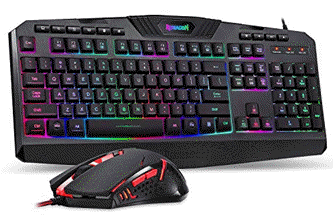2024-12-03 12:07:00
www.pcgamer.com
Intel has just unleashed its second-gen gaming GPUs, codenamed Battlemage and kicking off with the Arc B580 and B570 graphics cards. We’re a little disappointed that they’re only aiming at Nvidia’s low-end RTX 4060 for now. But when it comes to features and tech, if anything Battlemage looks to have the edge on AMD. And that includes upscaling.
To complement the launch of Battlemage, Intel is also rolling out a new version of its upscaling tech, known as XeSS 2. The big news is the addition of frame generation, making it pretty much feature-competitive with Nvidia’s DLSS.
Arguably, Intel actually has the edge on AMD. That’s because Intel’s GPUs sport XMX cores which are AI accelerators analogous to Nvidia’s Tensor cores. That allows Intel to match Nvidia in having AI-accelerated upscaling, when AMD’s scalers are essentially hand-coded. For now, AMD GPUs do not contain equivalent cores to Intel XMX or Nvidia Tensor.
Ostensibly, Intel’s Frame Generation looks to be similar to Nvidia’s DLSS algorithm. It uses data from previous frames including motion vectors and depth information to feed into optical flow and motion vector reprojection algorithms which are blended together to generate interim frames that can be inserted between frames fully rendered in the 3D pipeline.
Intel’s claims for the total performance uplift are startling. In its highest performance mode running F1 24 at 1440p, XESS 2’s upscaling combined with the new Frame Generation feature boosts performance from 48 fps to a faintly staggering 186 fps. That’s a 3.9x uplift. Even using the highest visual quality, performance jumps by 2.8x to 136 fps.
To complement XeSS Super Resolution scaling and the frame generation features, known as XeSS-SR and XeSS-FG for short, Intel is also introducing XeLL. Here, the “LL” stands for low latency.
This feature is analogous to Nvidia’s Reflex tech and Intel claims it can reduce latency running at just under 50 fps from 57 ms to 32 ms. Intel also says the XeLL can be used to essentially offset the latency added when enabling its Frame Generation tech.
In other words, the latency achieved by the new B580 GPU is the same when using Super Resolution, Frame Generation and the Low Latency mode as it is just using the Super Resolution scaling. The idea being that you get the best of both worlds—the lower latency delivered by upscaling, plus the buttery smooth animation enabled by the frame generation.
When you add it all together, it’s a very complete feature set that rivals Nvidia on paper and surpasses AMD’s essentially non-AI gaming GPUs. Exactly how well XeSS 2 will perform in practice and how its image quality will compare with both Nvidia DLSS and AMD FSR, well, we’ll have to wait and see.
Take your gaming to the next level! The Redragon S101 RGB Backlit Gaming Keyboard is an Amazon’s Choice product that delivers incredible value. This all-in-one PC Gamer Value Kit includes a Programmable Backlit Gaming Mouse, perfect for competitive gaming or casual use.
With 46,015 ratings, an average of 4.6 out of 5 stars, and over 4K+ bought in the past month, this kit is trusted by gamers everywhere! Available now for just $39.99 on Amazon. Plus, act fast and snag an exclusive 15% off coupon – but hurry, this offer won’t last long!
Support Techcratic
If you find value in Techcratic’s insights and articles, consider supporting us with Bitcoin. Your support helps me, as a solo operator, continue delivering high-quality content while managing all the technical aspects, from server maintenance to blog writing, future updates, and improvements. Support Innovation! Thank you.
Bitcoin Address:
bc1qlszw7elx2qahjwvaryh0tkgg8y68enw30gpvge
Please verify this address before sending funds.
Bitcoin QR Code
Simply scan the QR code below to support Techcratic.

Please read the Privacy and Security Disclaimer on how Techcratic handles your support.
Disclaimer: As an Amazon Associate, Techcratic may earn from qualifying purchases.










































![The Legend of Zelda: Breath of the Wild – Monya Toma Shrine Walkthrough [HD 1080P]](https://techcratic.com/wp-content/uploads/2025/06/1750224946_maxresdefault-360x180.jpg)






























![The Legend of Zelda: Breath of the Wild – Monya Toma Shrine Walkthrough [HD 1080P]](https://techcratic.com/wp-content/uploads/2025/06/1750224946_maxresdefault-350x250.jpg)
